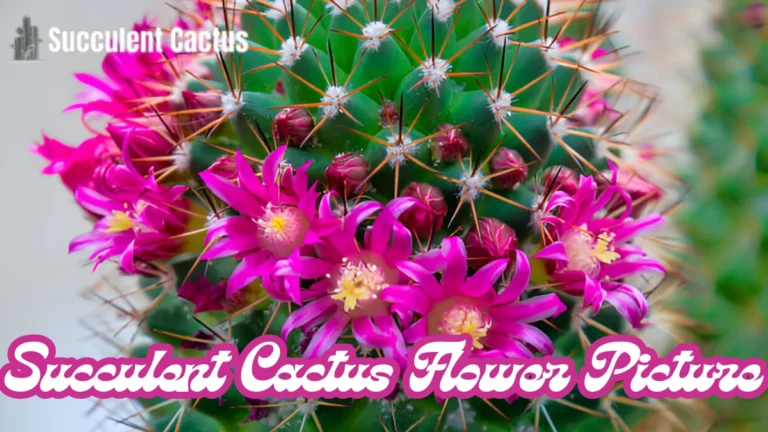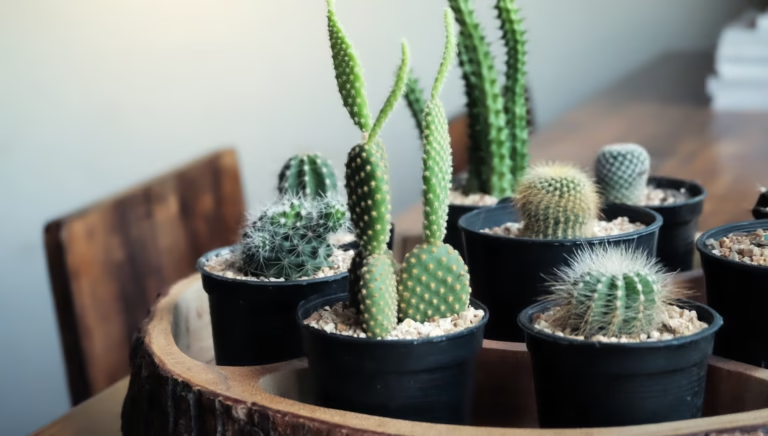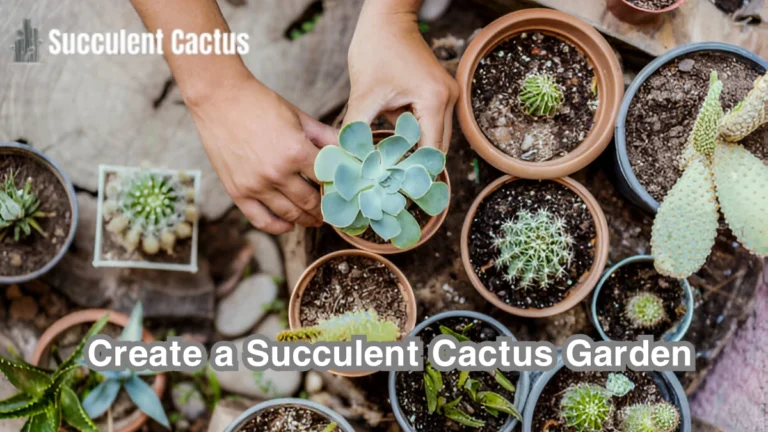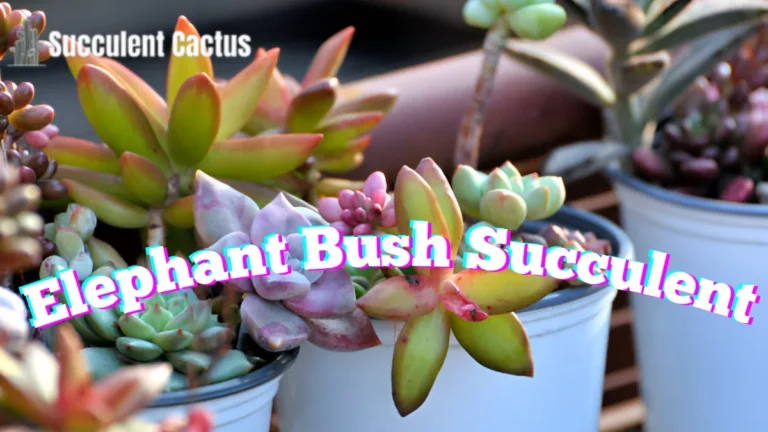Succulent Cactus Wall: A Stunning Vertical Garden Solution

Succulent cactus walls have become a popular trend in home decor and landscaping. These vertical gardens are aesthetically pleasing, space-saving, and low-maintenance, making them ideal for both indoor and outdoor settings. Whether you’re an experienced gardener or a beginner, creating a succulent cactus wall can be a rewarding and sustainable way to enhance your living space.
In this comprehensive guide, we’ll explore everything about succulent cactus walls, from their benefits and design ideas to step-by-step installation instructions.
Understanding Succulent Cactus Walls
What Is a Succulent Cactus Wall?
A succulent cactus wall is a vertical garden composed of various succulents and cacti arranged in a structured frame. These walls can be built on indoor or outdoor surfaces, providing a lush and artistic green space.
Why Are Succulent Walls Gaining Popularity?
- Aesthetic Appeal: Adds natural beauty to homes, offices, and outdoor landscapes.
- Space-Saving: Ideal for small apartments, balconies, and patios.
- Low Maintenance: Requires minimal watering and care compared to traditional gardens.
- Environmental Benefits: Improves air quality and reduces urban heat.
Best Locations for a Succulent Cactus Wall
- Indoor walls near sunlit windows
- Outdoor patios, balconies, or terraces
- Office spaces and restaurants for decor
- Entryways and garden fences
Choosing the Right Succulents and Cacti
Best Succulents for Vertical Gardens
- Echeveria: Forms beautiful rosettes, ideal for tight spaces.
- Sedum: Drought-resistant and spreads easily.
- Haworthia: Thrives in indoor environments.
Best Cacti for Succulent Walls
- Rhipsalis (Mistletoe Cactus): Soft, trailing cactus that thrives in partial shade.
- Mammillaria: Compact and colorful flowering cactus.
- Opuntia (Prickly Pear): A tough, adaptable option for outdoor walls.
How to Mix Succulents and Cacti for Balance
- Use a variety of shapes, colors, and textures to create visual appeal.
- Combine trailing varieties (like String of Pearls) with upright species (like Aloe Vera).
- Ensure similar light and water needs for all plants in your wall.
Designing Your Succulent Cactus Wall
Types of Succulent Walls
| Type | Features | Best For |
| Framed Wall | Plants grow in a wooden or metal frame | Indoor decor, small walls |
| Pocket Planter | Fabric pockets hold soil and plants | Large outdoor vertical gardens |
| Hanging Baskets | Succulents planted in wired baskets | Balconies, patios |
| Modular Panels | Prefabricated wall panels with plants | Large-scale projects |
How to Plan a Succulent Cactus Wall Layout
- Choose a wall with ample sunlight (at least 4–6 hours per day).
- Plan a pattern or random design based on plant colors and growth habits.
- Use a sturdy frame or modular panel that supports plant growth.
Common Mistakes to Avoid
- Overwatering, which leads to root rot.
- Using heavy soil that doesn’t drain well.
- Choosing sun-loving succulents for low-light spaces.
Building a DIY Succulent Cactus Wall
Materials Needed
- A wooden or metal frame
- A wire mesh or plastic backing
- High-quality succulent potting mix
- A selection of succulents and cacti
- A drill, screws, and wall mounts
Step-by-Step Guide
- Assemble the Frame: Secure a wooden or metal frame with mesh backing.
- Add the Soil and Mesh: Use lightweight, well-draining soil and a secure mesh to hold plants in place.
- Plant Your Succulents: Arrange plants, inserting roots into the mesh.
- Water Lightly: Allow plants to settle before mounting.
How to Secure the Wall for Long-Term Growth
- Use a drip irrigation system for easy maintenance.
- Install a sturdy mounting system to prevent the frame from falling.
- Ensure proper air circulation to avoid mold growth.
Caring for a Succulent Cactus Wall
Watering Techniques for Vertical Gardens
- Use a spray bottle for light misting.
- Install a drip irrigation system for even moisture distribution.
- Check soil every two weeks before watering.
Sunlight and Temperature Requirements
| Condition | Ideal Requirement |
| Sunlight | 4–6 hours daily |
| Temperature | 60°F – 85°F (15°C – 30°C) |
| Humidity | Low to moderate |
Pruning and Replanting
- Trim overgrown or dead leaves to maintain shape.
- Replant leggy succulents to encourage compact growth.
- Rotate plants to ensure even sun exposure.
Common Problems and Solutions
Pest Issues and Prevention
- Aphids & Mealybugs: Treat with neem oil or insecticidal soap.
- Fungus Gnats: Use well-draining soil to prevent overwatering.
Signs of Overwatering or Underwatering
| Condition | Symptoms | Solution |
| Overwatering | Yellow, mushy leaves | Reduce watering, improve drainage |
| Underwatering | Wrinkled, dry leaves | Increase watering frequency |
How to Revive a Dying Succulent Wall
- Remove rotting plants immediately.
- Improve airflow by spacing plants apart.
- Adjust watering schedules based on climate conditions.
Enhancing Aesthetics with Succulent Cactus Walls
Using Color and Texture for Visual Appeal
A well-designed succulent cactus wall isn’t just about growing plants—it’s about creating a living work of art. By combining different succulent species, you can achieve striking color contrasts and unique textures that enhance visual appeal.
Some popular combinations include:
- Echeveria and Sedum for a soft, rosette-like texture
- Opuntia (Prickly Pear) and Haworthia for bold and spiky contrasts
- Rhipsalis and Senecio (String of Pearls) for a cascading effect
To create a more dynamic appearance, consider these design techniques:
- Color Blocking: Arrange succulents in sections of similar colors to create a gradient effect.
- Mixed Heights: Place taller, upright succulents near the top and trailing varieties at the bottom.
- Geometric Arrangements: Use symmetrical patterns like diamonds or spirals for a modern look.
Lighting Ideas to Highlight the Succulent Wall
Proper lighting can dramatically enhance the look of a succulent cactus wall. Consider:
- LED Grow Lights for indoor walls that don’t get enough sunlight.
- Spotlights or Strip Lights to highlight colors at night.
- Natural Light Optimization by placing the wall near a window or glass door.
Creative DIY Frames and Containers
Instead of traditional wooden frames, explore creative materials:
- Upcycled picture frames for a vintage look.
- Hanging metal grids for a modern, industrial feel.
- Old wooden pallets for a rustic, farmhouse style.
Seasonal Care and Adaptation
How to Adjust Care During Different Seasons
Succulent cactus walls require different care strategies depending on the season:
- Spring & Summer: Increase watering slightly, as growth is active.
- Fall: Reduce watering and prune excess growth to prepare for dormancy.
- Winter: Protect outdoor succulent walls from frost by using frost cloths or bringing them indoors.
Protecting Outdoor Walls from Harsh Weather
- Extreme Heat: Provide shade during peak sunlight hours to prevent sunburn on leaves.
- Heavy Rain: Ensure proper drainage to prevent root rot.
- Frost and Snow: Wrap walls in burlap or breathable fabric to insulate the plants.
Adapting Succulent Walls for Different Climates
| Climate | Recommended Succulents & Cacti |
| Hot & Dry | Agave, Opuntia, Aloe Vera |
| Humid & Tropical | Rhipsalis, Burro’s Tail, Gasteria |
| Cold & Frost-Prone | Sempervivum, Hardy Sedums |
Using Succulent Cactus Walls for Sustainability
Eco-Friendly Benefits of a Vertical Garden
A succulent cactus wall contributes to sustainability by:
- Reducing Urban Heat by absorbing sunlight instead of reflecting it.
- Improving Air Quality by filtering pollutants and producing oxygen.
- Conserving Water since succulents require less irrigation compared to traditional gardens.
Water Conservation Techniques
- Use drip irrigation systems to minimize water waste.
- Choose self-watering planters for even moisture distribution.
- Recycle rainwater by installing a collection system to hydrate plants naturally.
How Succulent Walls Improve Indoor Air Quality
- Cacti and succulents absorb CO₂ at night, improving air quality.
- Studies suggest succulents can help reduce toxins like formaldehyde from indoor air.
- Moss walls and succulent walls together provide a highly effective natural filtration system.
Succulent Cactus Walls for Commercial Spaces
Why Businesses Are Installing Succulent Walls
More businesses are turning to succulent cactus walls for their offices, hotels, and retail spaces because they:
- Boost employee productivity by reducing stress.
- Enhance customer experience by providing an inviting atmosphere.
- Require minimal upkeep, making them a cost-effective décor option.
Best Locations for Succulent Walls in Commercial Settings
| Business Type | Ideal Succulent Wall Location |
| Restaurants | Outdoor patios, waiting areas |
| Offices | Meeting rooms, reception areas |
| Retail Stores | Storefront displays, checkout areas |
| Hotels | Lobby, rooftop lounges |
Case Study: A Green Office Transformation
A San Francisco-based tech company installed a succulent cactus wall in their lobby. The results:
- Employee stress levels dropped by 15% after three months.
- The business saw an increase in client engagement as customers admired the wall.
- Maintenance costs were 60% lower than traditional potted plants.
Troubleshooting Common Issues
Why Are My Succulents Falling Off the Wall?
- Weak root anchoring → Ensure plants have been properly secured in the frame.
- Poor soil structure → Use a light, well-draining mix with added perlite.
- Overwatering → Reduce watering frequency to prevent root rot.
How to Fix a Succulent Wall That’s Losing Color
- Too much shade? Move the wall to a sunnier spot.
- Nutrient deficiency? Add a low-nitrogen, succulent-friendly fertilizer.
- Extreme heat stress? Provide shade to prevent sunburn.
Preventing Pests in a Succulent Cactus Wall
Common pests like mealybugs, spider mites, and scale insects can infest succulent walls.
- Spray with neem oil every month to deter pests.
- Avoid overwatering, which attracts gnats.
- Introduce beneficial insects like ladybugs to control infestations naturally.
Expanding Your Succulent Cactus Wall Over Time
How to Add More Plants Without Rebuilding
- Expand using modular panels to add new sections gradually.
- Layer different succulent types to create depth.
- Use propagation techniques (cuttings, offsets) to add more plants affordably.
Upgrading Your Wall with Additional Features
- Automated Drip Irrigation: Saves water and simplifies maintenance.
- Built-in LED Lights: Enhances nighttime visibility and aesthetics.
- Moss and Air Plants: Integrate ferns or bromeliads for a tropical touch.
Inspiring Succulent Wall Ideas from Around the World
- Singapore’s Gardens by the Bay: Features a vertical succulent garden spanning 50 feet.
- Los Angeles Green Roofs: Businesses use succulent walls for insulation and cooling.
- Tokyo Office Spaces: Succulent walls enhance modern indoor environments.
FAQs
1. How long does it take for a succulent wall to grow? It typically takes 4–6 months for succulents to fully establish in a wall.
2. Can I use faux succulents for a maintenance-free wall? Yes! High-quality artificial succulents provide a realistic look with zero upkeep.
3. What is the ideal frame size for a beginner? A 2×2 ft frame is a great starting size for a small indoor succulent wall.
4. Can I create a succulent wall without soil? Yes! Hydroponic systems allow succulents to grow in nutrient-rich water without soil.
5. Are succulent cactus walls pet-friendly? Most succulents are non-toxic, but some cacti have spines that could harm pets.
Conclusion
A succulent cactus wall is a stunning, sustainable, and low-maintenance way to add greenery to any space. Whether you’re looking to enhance your home, office, or outdoor area, these walls offer endless creative possibilities.
With the right planning, design, and care, you can build a breathtaking succulent cactus wall that thrives for years. Ready to start your vertical garden journey? Grab your succulents and get planting today!






